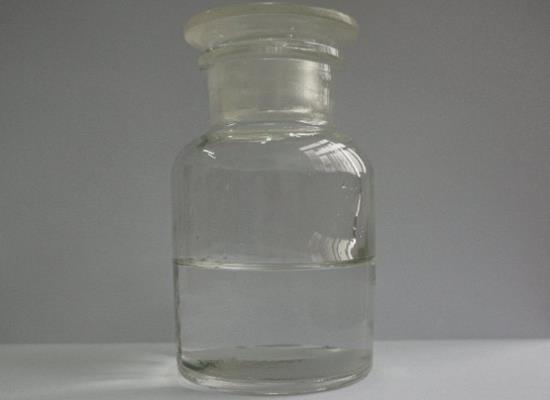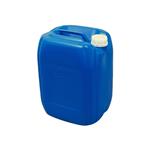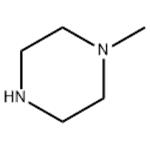1-Methylpiperazine: Applications in Anti-Prion, Anti-tumor, and Anti-proliferative Agent Synthesis
Apr 29,2024
General Description
1-Methylpiperazine is a key component in the synthesis of various bioactive compounds with diverse therapeutic applications. In the context of anti-prion agents, its incorporation into quinacrine analogs enhances anti-prion activity by improving potency and binding affinity to target proteins. In the realm of antitumor agents, 1-Methylpiperazine is utilized in the preparation of compounds that inhibit crucial protein kinases involved in cancer progression, showing promise as effective antitumor drugs. Furthermore, in the synthesis of antiproliferative agents, 1-Methylpiperazine plays a vital role in producing compounds with potential antiproliferative activity, offering new avenues for cancer treatment and prevention.

Figure 1. 1-Methylpiperazine
Applications in synthesis of anti-prion agents
1-Methylpiperazine plays a pivotal role in the synthesis and functionalization of quinacrine analogs aimed at combating prion-related diseases. In the quest for more potent and effective anti-prion agents, researchers have explored the modification of quinacrine by substituting its basic alkyl side chain with various phenyl residues, including 1-Methylpiperazine. The introduction of 1-Methylpiperazine into the quinacrine structure led to the development of promising analogs with enhanced anti-prion activities. These analogs exhibited improved potency and activity across different prion-infected murine cell models compared to quinacrine itself. Moreover, they demonstrated greater binding affinities for a human prion protein fragment (hPrP121-231), indicating their potential efficacy in targeting prion-related pathologies. Additionally, the inclusion of 1-Methylpiperazine facilitated the attainment of desirable drug-like properties. Analogous compounds displayed permeabilities within the range of central nervous system (CNS) permeant candidates, as determined by the PAMPA-BBB assay. Notably, one analog exhibited reduced susceptibility to Pgp efflux activity, indicating potential advantages in overcoming drug resistance mechanisms. Overall, the incorporation of 1-Methylpiperazine into functionalized quinacrine analogs represents a strategic approach to enhance their anti-prion activities and drug-like potential. The substituted 9-amino side chain, including 1-Methylpiperazine, emerged as a critical determinant influencing cellular potency, permeability, and binding affinity to the target protein, thereby highlighting its significance in anti-prion drug design and development. 1
Applications in synthesis of anti-tumor agents
1-Methylpiperazine, a versatile compound, finds significant applications in the synthesis of antitumor agents, particularly in the preparation of cyclopropanecarboxamido-substituted aromatic compounds. These compounds are designed to inhibit protein kinases, including tyrosine kinase and Raf kinase, which are crucial targets in cancer therapy. The synthesis involves the reaction of 1-Methylpiperazine-derived intermediates with various reagents to yield the desired antitumor agents. For instance, the reaction between N-[6-(4-amino-3-methylphenoxy)pyrimidin-4-yl]cyclopropanecarboxamide and 4-chloro-3-(trifluoromethyl)phenyl isocyanate leads to the formation of urea II in high yield, representing an efficient route for the synthesis of these compounds. The resulting compounds have been subjected to rigorous testing for their inhibitory activity against specific kinases and their effectiveness in inhibiting the proliferation of cancer cells, such as PLC-PRF-5 cells. The data obtained from these tests demonstrate the potential of these compounds as promising candidates for antitumor drug development. Furthermore, pharmaceutical compositions comprising these compounds have been disclosed, indicating their potential for further development as therapeutic agents against various types of cancers. The strategic use of 1-Methylpiperazine in the synthesis of these antitumor agents underscores its importance in medicinal chemistry research aimed at combating cancer. 2
Applications in synthesis of anti-proliferative agents
1-Methylpiperazine plays a crucial role in the synthesis of antiproliferative agents, particularly in the preparation of N,N'-diphenylpyrimidinediamine derivatives. These derivatives are designed to exhibit antiproliferative activity, making them potential candidates for the prevention or treatment of tumors and other proliferative conditions sensitive to the inhibition of EphB4 kinases. The synthesis involves several key steps, including the amination of 2,4-dichloropyrimidine with 3-chloro-2,4-difluoroaniline, followed by alkylation with iodomethane and amination with 3-morpholin-4-yl-5-thiomorpholin-4-ylaniline. These steps lead to the formation of candidate antiproliferative agents, which represents an intermediate in the synthesis of the desired N,N'-diphenylpyrimidinediamine derivatives. Candidate antiproliferative agents once synthesized, are subjected to rigorous evaluation in EphB4 enzyme assays to assess their effectiveness as antiproliferative agents. The data obtained from these assays provide valuable insights into the potential of these compounds for inhibiting tumor growth and proliferation in vitro. Overall, the strategic utilization of 1-Methylpiperazine in the synthesis of these antiproliferative agents underscores its significance in medicinal chemistry research aimed at developing novel therapies for cancer and other proliferative disorders. 3
Reference
1. Nguyen T, Sakasegawa Y, Doh-Ura K, Go ML. Anti-prion activities and drug-like potential of functionalized quinacrine analogs with basic phenyl residues at the 9-amino position. Eur J Med Chem. 2011; 46(7): 2917-2929.
2. Zhang DY, Zhang RH, Zhong BY, Shih C. Preparation of cyclopropanecarboxamido-substituted aromatic compounds as antitumor agents. 2014; Patent Number: WO2014000418.
3. Ashton SE, Barlaam BC, Cross DA, et al. Preparation of N,N'-diphenylpyrimidinediamine derivatives for use as antiproliferative agents. 2008; Patent Number: WO2008104754.
- Related articles
- Related Qustion
- 1-Methylpiperazine: synthesis, applications and safety Dec 15, 2023
1-Methylpiperazine is synthesized via aminolysis and hydrogenation, used in industry despite health risks, requiring stringent safety protocols.
- 1-Methylpiperazine: exploring the properties and applications of a versatile organic compound Jul 6, 2023
1-Methylpiperazine is a chemical compound with interesting properties and diverse applications.
- Applications of 1-Methylpiperazine Nov 13, 2019
1-Methylpiperazine is a common building block used in organic synthesis. For example, N-methylpiperazine is used in the manufacture of various pharmaceutical drugs including cyclizine, meclizine, and sildenafil.
Limited data on Tolylene-2,4-diisocyanate complicates dermal exposure assessment. Respiratory effects and carcinogenicity risks are evident, but uncertainties persist.....
Apr 29,2024APICuprous bromide, synthesized from copper(II) oxide and hydrobromic acid, showcases versatile properties crucial in crystal synthesis.....
Apr 29,2024API1-Methylpiperazine
109-01-3You may like
1-Methylpiperazine manufacturers
- 1-Methylpiperazine
-

- $5.00 / 25kg
- 2024-05-15
- CAS:109-01-3
- Min. Order: 1kg
- Purity: ≥98%
- Supply Ability: 500mt/year
- 1-Methylpiperazine
-

- $0.00 / 25Kg/Bag
- 2024-05-08
- CAS:109-01-3
- Min. Order: 2Kg/Bag
- Purity: 99% up, High Density
- Supply Ability: 20 tons
- 1-Methylpiperazin
-

- $8.00 / 1KG
- 2024-01-22
- CAS:109-01-3
- Min. Order: 1KG
- Purity: 99%
- Supply Ability: g-kg-tons, free sample is available




